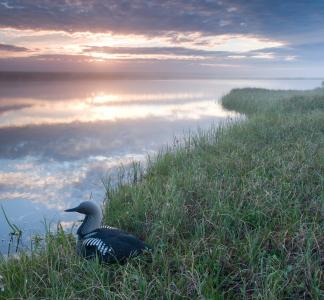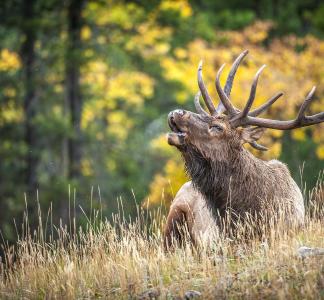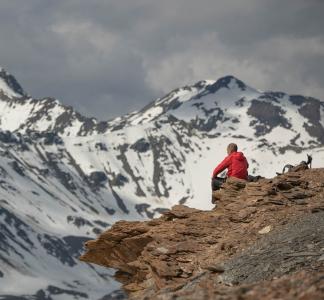13 animals that depend on wildlife refuges to survive
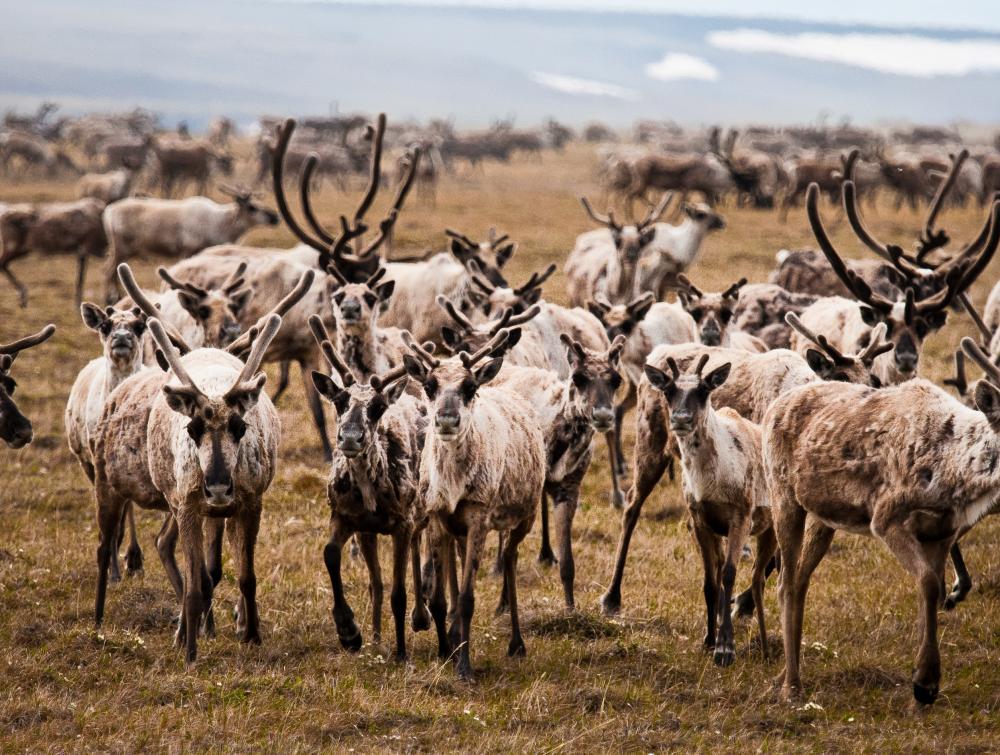
Moe Witschard
At-risk species, from iconic to obscure
National wildlife refuges make up some of the habitat these animals need.
It has been 150 years since the federal government first set aside national public land expressly for the protection of wildlife—northern fur seals on Alaska's Pribilof Islands, which were then in danger of being wiped out due to the booming fur trade. Today, the units of public land most closely associated with preserving healthy animal populations are national wildlife refuges, and the U.S. has more than 560 of them, covering about 150 million acres and protecting hundreds of threatened or endangered species.
When an animal is listed under the Endangered Species Act, scientists at the Fish and Wildlife Service designate some stretches of land as "critical habitat," meaning they can provide all shelter, food and other essentials the species needs. These areas may be huge (more than 9 million acres in the case of the endangered Indiana bat) or very small (a few community parks in an affluent Southern California suburb, for the Palos Verdes blue butterfly). And in many cases, they are found within national wildlife refuges, underscoring the great value of our public lands as an ark safeguarding the nation's biodiversity.
Polar bear – Arctic National Wildlife Refuge, Alaska
Polar bears are listed as a threatened species under the Endangered Species Act, and some of the most important habitat for the population in Alaska's Beaufort Sea population--barrier islands, sea ice and coastal lands--is part of the Arctic National Wildlife Refuge. You may recognize that name because the Trump administration and Congress worked in cahoots to open it up for drilling in late 2017--an action that could cause some polar bear mothers to abandon their dens and disturb populations already pushed to the brink by climate change.
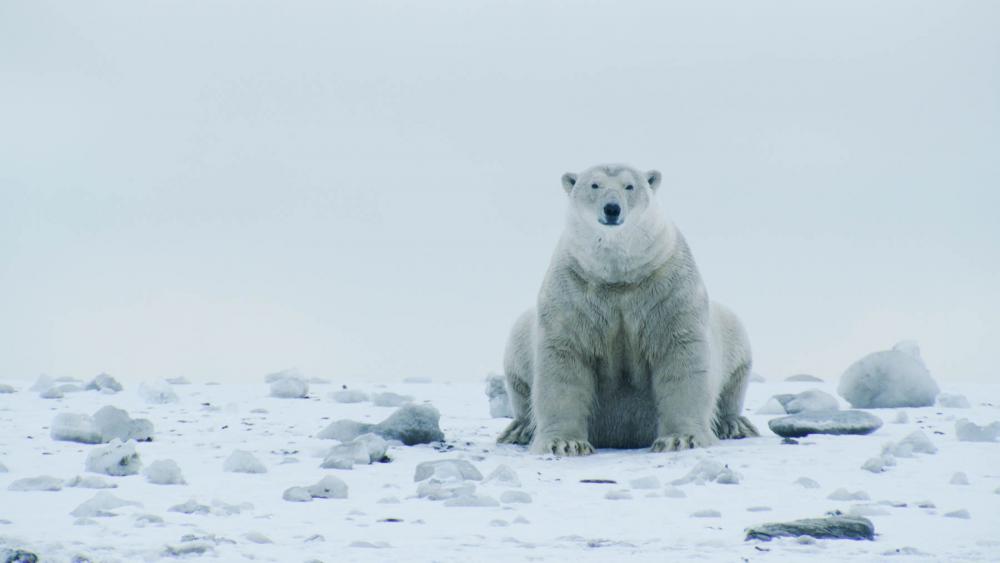
Arctic National Wildlife Refuge, AK
Florian Schulz
American crocodile - Crocodile Lake National Wildlife Refuge, Florida
No, not American alligators—real crocodiles, something you likely associate more closely with Just-So Stories than U.S. wetlands. But a small population of these beasts does reside in American swamps, coastal lagoons and estuaries, primarily in South Florida. Among lands and waters designated as critical habitat for crocodiles is the aptly named Crocodile Lake National Wildlife Refuge. Though seldom seen and once very close to extinction, American crocs have made a comeback in recent years.
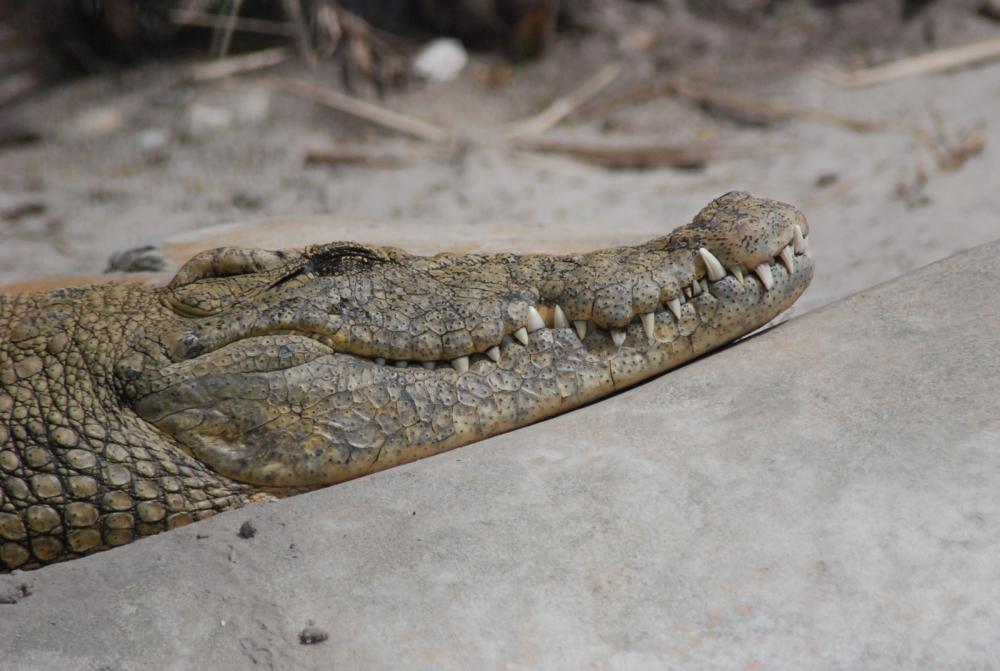
American Crocodile at Gatorland.
Josh Hallett, flickr.
Whooping crane – Aransas National Wildlife Refuge, Texas
A fully grown whooping crane can have the same wingspan as an NBA power forward, but that lanky build doesn't prevent the birds from traveling with uncommon grace (their movements are routinely described as "stately"). At one point, in the 1940s, there were thought to be only 16 living whooping cranes in the U.S., but the masked giants have made a comeback thanks in part to the Fish and Wildlife Service's conservation efforts. Critical habitat includes Aransas National Wildlife Refuge (Texas), pictured above, where America's only self-sustaining wild population spends winters, and Salt Plains National Wildlife Refuge (Oklahoma), a migratory stopover.
Quino checkerspot butterfly – San Diego National Wildlife Refuge, California
This rare butterfly subspecies with a distinctive orange, black, brown and white wing pattern is imperiled by drought, development and now, potentially, President Trump's proposed border wall between the U.S. and Mexico. The good news: the Quino checkerspot is making something of a comeback thanks to reintroduction efforts in San Diego National Wildlife Refuge, which is considered part of its critical habitat range.
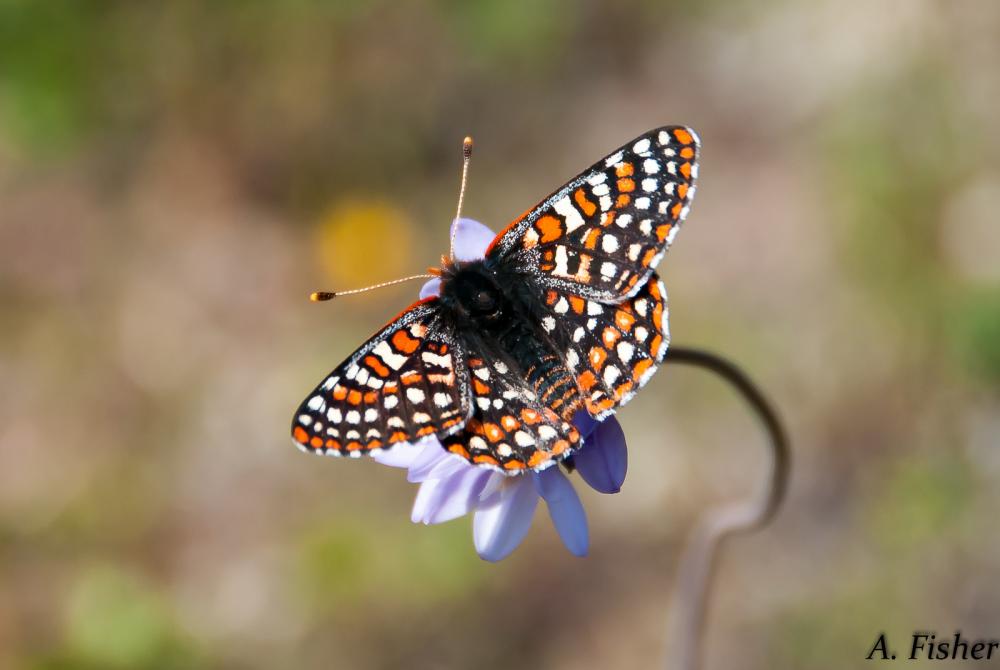
Quino checkerspot butterfly.
Andrew Fisher, U.S. Fish and Wildlife Service Volunteer Biologist.
West Indian manatee - Merritt Island National Wildlife Refuge, Florida
Manatees have benefited greatly from conservation efforts since the 1970s, but they remain vulnerable to human-caused habitat loss, boat collisions and other threats. In 2017, the Trump administration downgraded manatees from 'endangered' to 'threatened' status, a decision criticized by many conservationists for not taking into account long-term threats. For now, this placid coastal river- and estuary-dweller's critical habitat overlaps with several wildlife refuges in Florida, including Merritt Island National Wildlife Refuge and the famed Theodore Roosevelt-founded Pelican Island National Wildlife Refuge.
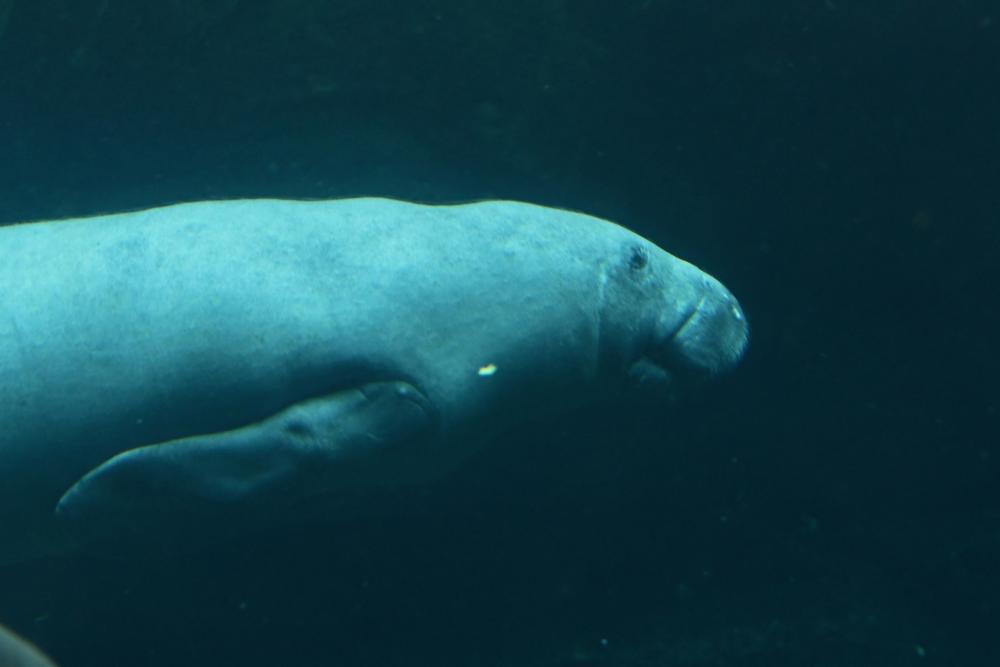
West Indian manatee.
Brian Henderson, flickr.
Staghorn coral - Vieques National Wildlife Refuge, Puerto Rico
You may think of it as scenery, but coral is very much alive—and threatened by disease, climate change-driven bleaching and other dangers. Staghorn coral populations in particular have plummeted over the last few decades, including by up to 98 percent in parts of the Caribbean. Critical habitat for this threatened species includes waters off paradisic Vieques National Wildlife Refuge, an area featuring what have been called “the most beautiful beaches — on an island of beautiful beaches.”
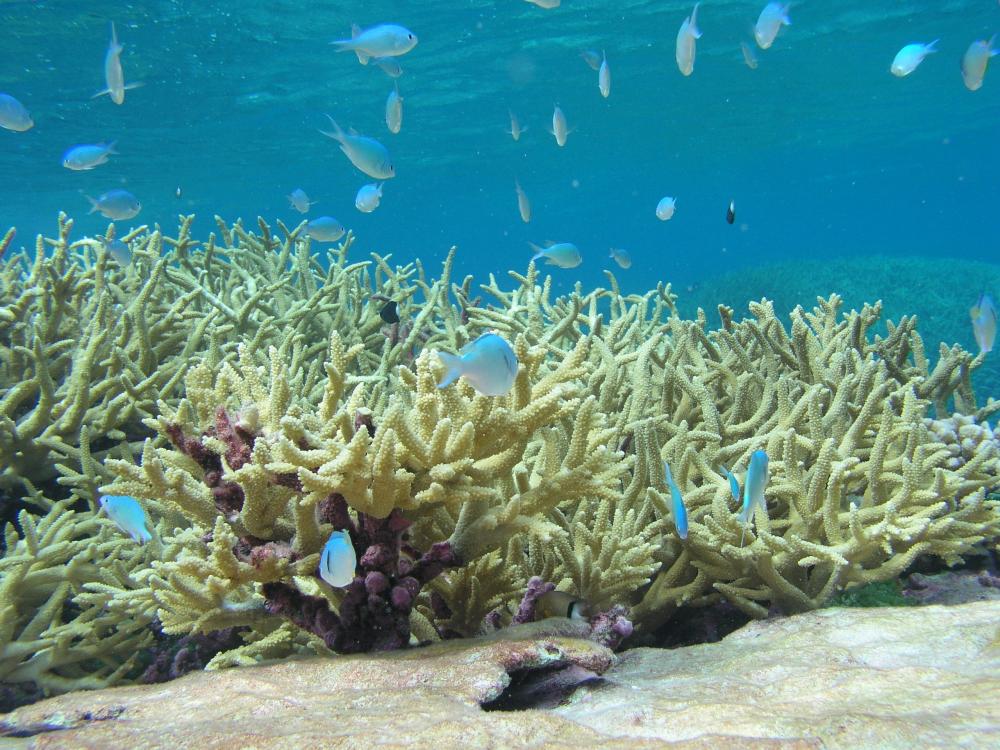
Chromis reef fish and staghorn coral at Palmyra Atoll National Wildlife Refuge.
Amanda Meyer, U.S. Fish and Wildlife Service.
Streaked horned lark - Baskett Slough National Wildlife Refuge, Oregon
The streaked horned lark is found only in the Pacific Northwest, where recent estimates have put the range-wide population of this subspecies at between 1,000 and 1,600. With such precarious numbers, the small, yellow and black-'masked' bird depends on careful conservation of wide-open landscape on public lands like the Baskett Slough, William L. Finley and Ankeny national wildlife refuges, each of which protects some of its designated critical habitat. It is currently listed as 'threatened' under the Endangered Species Act.
Hawaiian monk seal - Kilauea Point National Wildlife Refuge, Hawaii
The beloved, besieged Hawaiian monk seal can grow to 450 pounds and has jaws suited to cracking crab shells with ease. However, it remains utterly at the whim of habitat loss and indiscriminate fishing operations, which have helped make it one of the most endangered marine mammals in the world. Found only in U.S. waters, the big predator is referred to as Ilio holo I ka uaua, or “the dog that runs in the rough water,” by native Hawaiians. Without a doubt, that vaguely canine appearance has helped buoy its public standing as a loveable beach-dweller.
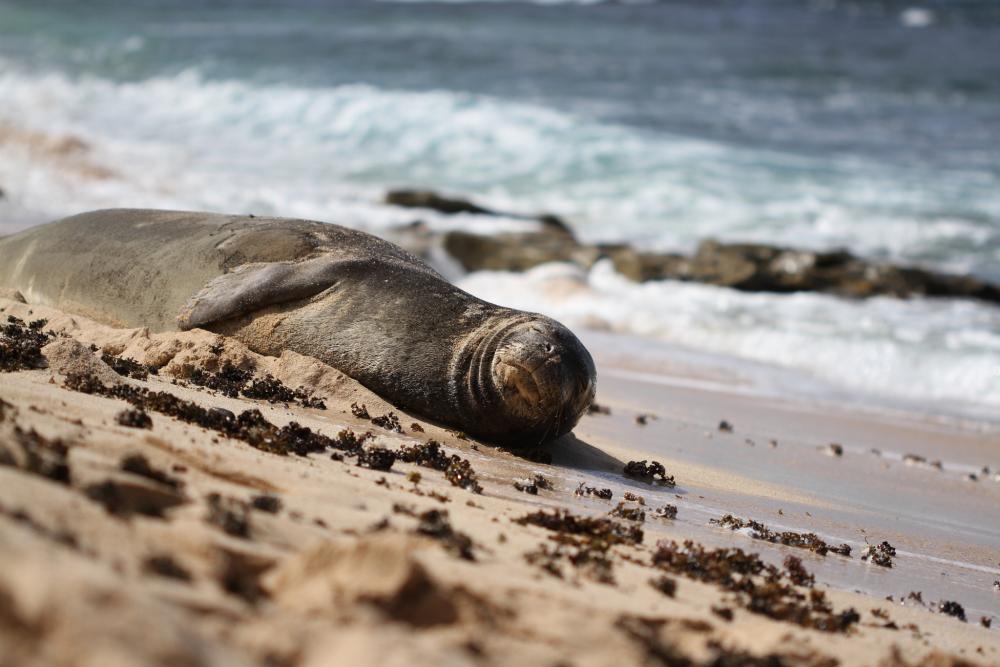
Hawaiian monk seal.
Henry Lydecker, flickr.
Gulf sturgeon - Bayou Sauvage National Wildlife Refuge, Louisiana
This subspecies of Atlantic sturgeon breeds in freshwater only after migrating upriver from marine and estuary habitat and is limited to a small area of the Gulf of Mexico from Tampa Bay, Florida, to Lake Ponchartrain, Louisiana. The gulf sturgeon is a fascinating example of a living fossil--an armored, torpedo-shaped fish that has been slow to evolve and doesn’t look much different than when dinosaurs roamed the earth. These partly cartilaginous giants are known for leaping from the water without warning. Sadly, they are at-risk due to overfishing--widespread for nearly a century until fisheries were closed in the mid-1980s--water pollution, habitat destruction, dredging and dams.
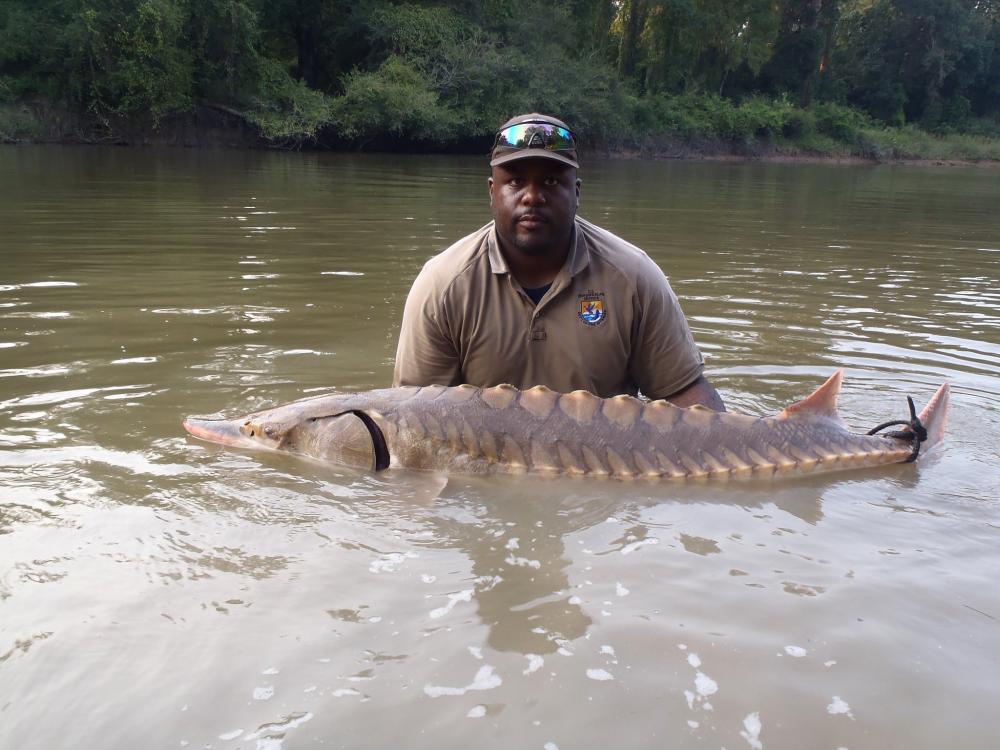
Fisheries biologist Cedric Doolittle is releasing a Gulf Sturgeon after implanting a tracking transmitter into the fish.
Kayla Kimmel, U.S. Fish and Wildlife Service.
Coachella Valley fringe toed lizard - Coachella Valley National Wildlife Refuge, California
As its name suggests, this ultra-specialized species only inhabits California's Coachella Valley, where it dashes across (and sometimes hides underneath) fine, shifting sands in a core habitat area that may cover as little as 19 square miles. Coachella Valley National Wildlife Refuge was established in 1985 to help conserve the species, which has seen its habitat dwindle thanks to encroaching human development. By some estimates, the Coachella Valley fringe toed lizard's historic range has been cut by up to 90 percent.
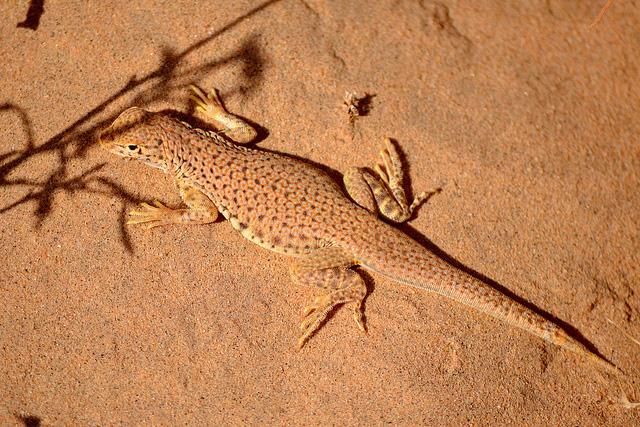
Coachella Valley Fringe-toed lizard.
California Department of Fish and Wildlife photo by Jeb Bjerke, flickr.
Canada lynx - Aroostook National Wildlife Refuge, Maine
Located on the former grounds of an Air Force base, Aroostook National Wildlife Refuge lies at the edge of land designated as critical habitat for Canada lynx in New England. Listed as threatened since the year 2000, the tufted-eared, furry-jowled creature is a skilled hunter of a variety of small animals, notably the snowshoe hare. Unfortunately, poor forest management practices have resulted in fragmentation of the spruce-fir forests and rolling terrain the cat needs, as well as the dense understory vegetation favored by its prey. Road-building, development and an increase in the severity of wildfires brought on by climate change have altered habitat as well. As a result, the Canada lynx has dwindled to fewer than 2,000 in the contiguous U.S., with most habitat found on public lands.
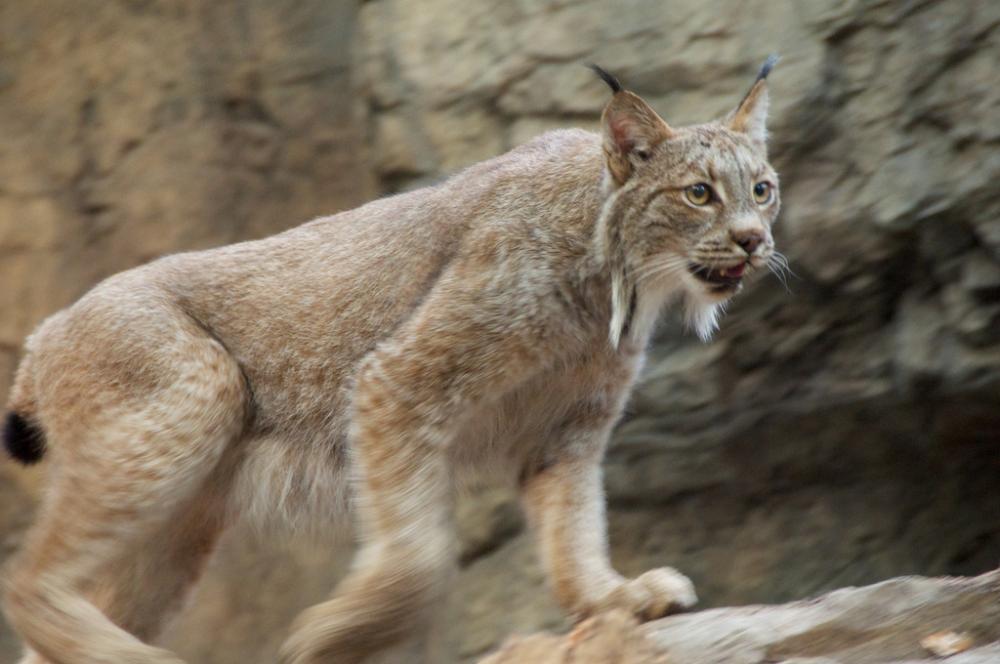
Canada lynx.
Mike Myers, flickr.
Frosted flatwoods salamander - St. Marks National Wildlife Refuge, Florida
Threatened by habitat loss, the frosted flatwoods salamander inhabits just 10 breeding ponds within Florida's St. Marks National Wildlife Refuge, traditionally a stronghold for the species within its federally tabbed few-dozen-mile critical habitat area. The southeastern U.S. has been called "the center of amphibian biodiversity" in America, and conserving ponds and other salamander-friendly spots in the region amid climate change will help ensure these imperiled creatures live to fight another day.
Porcupine Caribou Herd – Arctic National Wildlife Refuge, Alaska
While the Porcupine Caribou Herd is not threatened or endangered, and is in fact one of Alaska’s largest caribou herds, numbering close to 200,000, it now faces threats from oil and gas development. The 1.5 million-acre coastal plain of the Arctic National Wildlife Refuge is the birthing ground of the Porcupine Caribou Herd, sustaining indigenous communities like the Arctic Village, where Gwich’in people refer to the coastal plain as “the Sacred Place Where Life Begins.” The Arctic National Wildlife Refuge also contains winter and migratory habitat for the herd.
Congress' and the Trump administration's efforts to drill for oil in the area are a serious threat to the herd and, in turn, to the Gwich’in nation, which has followed the herd for centuries and now lives in villages adjacent to the herd’s habitat both in Alaska and Canada.
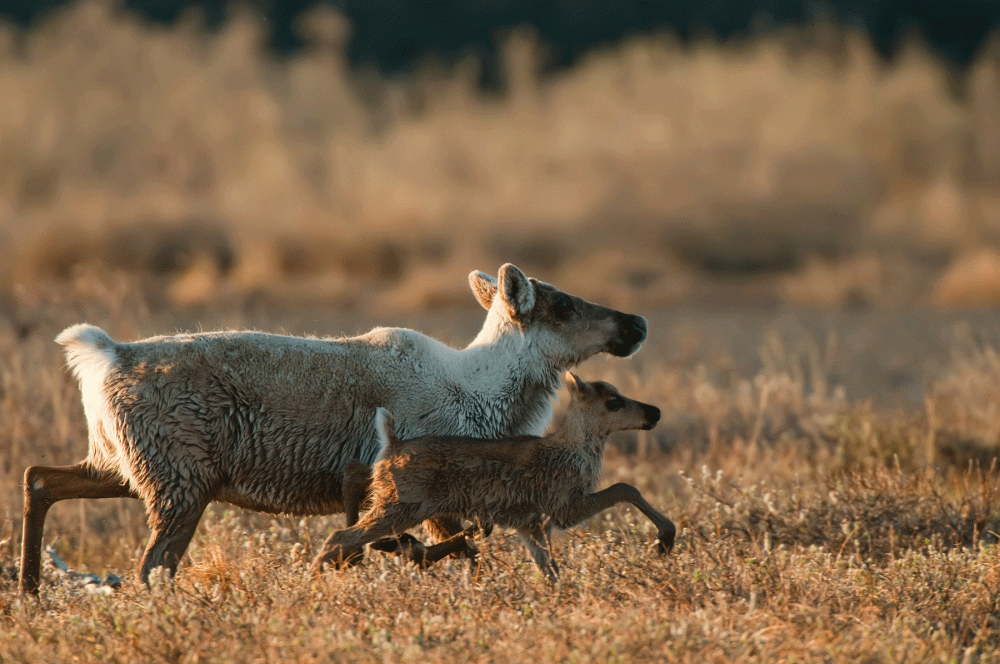
Mother caribou and calf on their westward migration in the Utukok Uplands area, Northwestern Alaska.
Florian Schulz.
